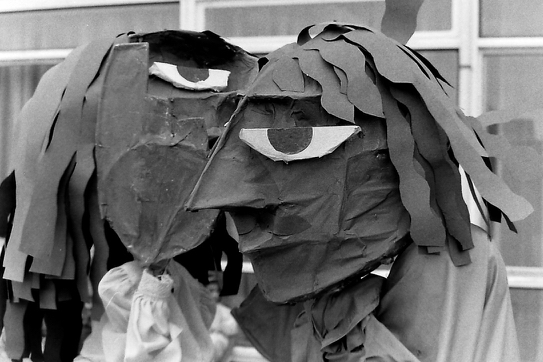When I was a young community arts worker, somebody once asked me ‘Do poor people need social workers, or do social workers need poor people?’ It was an unsettling question. It exposed assumptions in how I imagined social relations and the value of my work. I’ve been thinking about its implications for nearly 40 years and I still don’t have a good answer. I wonder about artists who work with people. Whose needs are being met?
Participatory art has become much more established since then, as social, economic and political conditions have changed. A practice that set out to challenge the art world’s authority and its failures is now accepted, perhaps absorbed by it. Participation is the new black—cool, ubiquitous and beyond reproach. Celebrated artists make participatory work. Orchestras, theatres and galleries offer participatory programmes. They want to involve ‘hard-to-reach’ communities. And all this is to be welcomed, of course. Cultural institutions should be open to all citizens; barriers to access should be recognised and removed.
But who really benefits from this change? Is it the people once ignored by the art world, or the art world itself? Certainly, people often enjoy and benefit from the experiences in which they are invited to engage. But the underlying reasons for their absence in the art world are not changed by this participation. The art world, on the other hand, gains new customers, democratic legitimacy and creative resources. It is always hungry for new material, ideas, drama and unheard stories. In opening itself to participatory art, in carefully controlled conditions, it defuses a challenge to its authority and shows a willingness to contribute to society. It emerges from the encounter strengthened.
It is difficult to raise these issues without seeming, or becoming, self-righteous. That is not my intention. I’ve spent my life in community art because I believe that it, and art in general, has profound and unique things to offer. I know first-hand and from research that participatory art can be a transformative experience. I know that it can empower people who are marginalised, and help advance social justice. I know that it can be a political act. But all that depends on those of us who work in this field testing our assumptions, probing our self-serving stories and facing up to the complexity of our motives. Lives might change as a result of our work, but the causes and consequences of that change are not within our control. All we can give is our time, care and creative attention, accepting that they may not be wanted.
This is a restless art because it depends on uncomfortable tensions. There is no easy place to stand, just a continual need to shift my weight to redress the balance. But in that restlessness lies creative energy. It makes participatory art an exciting place to be. It’s messy, difficult, compromised—but at its best community art can be joyously emancipatory. It shows us that we will only find pathways to a better place if we work together. We need each other. And we need to keep asking questions we can’t answer.

Responses
It is tricky. I think that individuals who are lucky enough to work professionally have acquired knowledge and skills through either training or experience. They generally feel that their work is more valuable as a result. Someone engaging in art for the first time may bring enthusiasm, determination and energy but will their absence of professional skill always place them in the junior section? What if there is another component – the creative ideas and inspiration which come from people who are not part of the artistic establishment and therefore not constrained by ‘how things are done’. if you know what I mean!
LikeLiked by 1 person
That difference between professional non-professional artists is part of what defines participatory art: each brings something that the other cannot. I’ve written about it in more length in Chapter 5 of the book.
LikeLike
[…] rusteloze kunstvorm met alle discussies vandien. Het boek is gratis te downloaden. En hij stelt lastige vragen: wat kan kunst nu echt? Kan het iets betekenen voor mensen? Ja, maar kan het ook echt hun […]
LikeLike